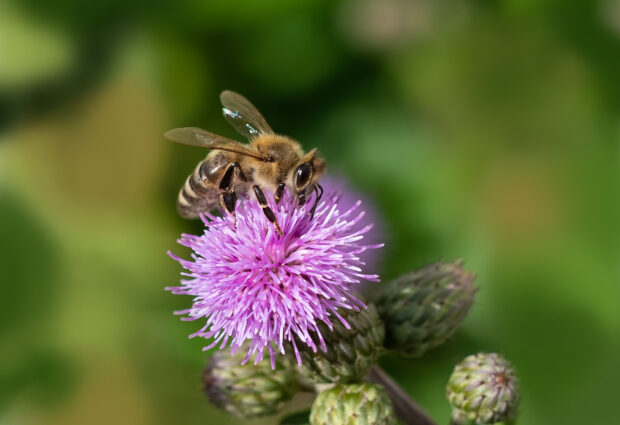
There has been widespread media coverage of the government’s announcement that an application for the emergency use of a neonicotinoid pesticide on sugar beet in England will not be granted.
An application for emergency authorisation to use Cruiser SB on the sugar beet crop in England for 2025 to control aphids carrying the virus yellows complex was received from British Sugar and the National Farmers’ Union.
Defra took the decision based on robust assessments of environmental, health and economic risks and benefits, and advice from its economists and Chief Scientific Adviser, the Health and Safety Executive and the UK Expert Committee on Pesticides.
This neonicotinoid is extremely toxic to pollinators, and even at doses that are not directly fatal to bees, it can cause cognitive problems impacting foraging abilities and the productivity of hives.
The government has provided research funding through the Farming Futures Fund to look at the potential for precision breeding in producing virus-resistant varieties of sugar beet. Defra will continue to help farmers to use Integrated Pest Management (IPM) techniques through the Sustainable Farming Incentive – IPM can help reduce the need for chemical pesticides while boosting crop health and resilience.
Publications such as The Times, The Guardian, Evening Standard, Farmers Weekly, Farmers Guardian, Hort Week, Eastern Daily Press and the Express & Star covered the announcement. There was also broadcast coverage on BBC Radio 4 Today and BBC Radio 4 Farming Today.
Environment Minister Emma Hardy said:
“Britain is currently one of the most nature depleted countries in the world.
“This government is committed to protecting bees from toxic neonicotinoid pesticides, while working with our farmers to find new ways to protect crops and support a profitable farming sector.
“We recognise the threat that virus yellows can pose to sugar beet growers, and we will continue to support industry to develop alternatives to neonicotinoids on sugar beet that are effective at high levels of yellows virus infection.”
1 comment
Comment by Simon Ward posted on
Isn't the cart before the horse? Given the very low impact on pollinators when used on sugar beet and the crop damage experienced in the year when use was banned in the UK, wouldn't the intelligent response have been to develop resistant varieties before imposing the ban? The stewardship concept was imaginative and potentially led the way internationally towards better management of pesticides. We need to improve the return on selective use as can be achieved by a restriction on supply and auction of the available quantity consequently applying meaningful value to the risk assessment and thus need to treat.